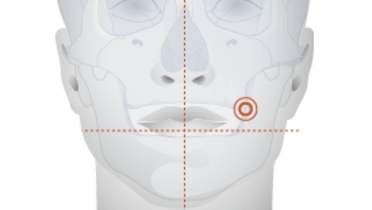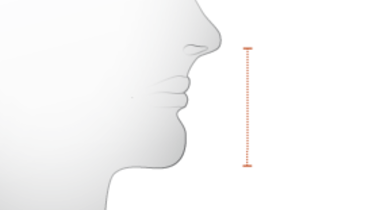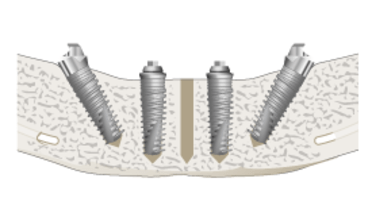-
0
Patient Assessment
- 0.1 Patient demand
- 0.2 Overarching considerations
- 0.3 Local history
- 0.4 Anatomical location
- 0.5 General patient history
-
0.6
Risk assessment & special high risk categories
- 5.1 Risk assessment & special high risk categories
- 5.2 age
- 5.3 Compliance
- 5.4 Smoking
- 5.5 Drug abuse
- 5.6 Recreational drugs and alcohol abuse
- 5.7 Parafunctions
- 5.8 Diabetes
- 5.9 Osteoporosis
- 5.10 Coagulation disorders and anticoagulant therapy
- 5.11 Steroids
- 5.12 Bisphosphonates
- 5.13 BRONJ / ARONJ
- 5.14 Radiotherapy
- 5.15 Risk factors
-
1
Diagnostics
-
1.1
Clinical Assessment
- 0.1 Lip line
- 0.2 Mouth opening
- 0.3 Vertical dimension
- 0.4 Maxillo-mandibular relationship
- 0.5 TMD
- 0.6 Existing prosthesis
- 0.7 Muco-gingival junction
- 0.8 Hyposalivation and Xerostomia
- 1.2 Clinical findings
-
1.3
Clinical diagnostic assessments
- 2.1 Microbiology
- 2.2 Salivary output
-
1.4
Diagnostic imaging
- 3.1 Imaging overview
- 3.2 Intraoral radiographs
- 3.3 Panoramic
- 3.4 CBCT
- 3.5 CT
- 1.5 Diagnostic prosthodontic guides
-
1.1
Clinical Assessment
-
2
Treatment Options
- 2.1 Mucosally-supported
-
2.2
Implant-retained/supported, general
- 1.1 Prosthodontic options overview
- 1.2 Number of implants maxilla and mandible
- 1.3 Time to function
- 1.4 Submerged or non-submerged
- 1.5 Soft tissue management
- 1.6 Hard tissue management, mandible
- 1.7 Hard tissue management, maxilla
- 1.8 Need for grafting
- 1.9 Healed vs fresh extraction socket
- 1.10 Digital treatment planning protocols
- 2.3 Implant prosthetics - removable
-
2.4
Implant prosthetics - fixed
- 2.5 Comprehensive treatment concepts
-
3
Treatment Procedures
-
3.1
Surgical
-
3.2
Removable prosthetics
-
3.3
Fixed prosthetics
-
3.1
Surgical
- 4 Aftercare
開口量
Key points
- 患者は、口が小さい場合や、外傷、外科的介入、硬皮症、傷痕または筋疾患および顎関節症(TMD)により開口量が限られている場合があります。
- 口周囲の軟組織をやさしく扱い、小児用等、より小さいサイズの器具を使用します。
- インプラント治療においては、よりアクセスしやすい補綴設計により、限られた開口量に対する治療を工夫します。
開口量と治療介入のための手段
大半の患者の開口量は、通常の補綴・外科的治療介入を容易に行うことができます。わずかな開口量または小口症は、硬皮症、びまん性全身性硬化症、口腔顔面の外傷のある患者、または腫瘍性疾患、顎関節症(TMD)の外科的切除を行った患者において見られます。外科的切除を行った場合の瘢痕、組織拘縮、付随する基本的な骨支持および組織浮腫の欠如により、開口量が制限され、外科・歯科治療が困難になります。
インプラントに基づくリハビリテーションの選択を阻むような開口量の下限を提示することはできません。唇のインプラント軸の方向は、後で角度付きアバットメントまたは上部構造によって補われ、アクセスの困難さに対する解決策となります。
軟組織の治癒および/または瘢痕は、安定状態に達するまでに数年を要します。一方、補綴物により暫定的、最終的な組織支持を実現し、審美性を改善するための努力については、治療計画作成をさらに進める前に検討する必要があります。
口腔構造における外科的切除または外傷についても、咬合高径の損失、下顎骨の開口量の減少、下顎運動の変化を招く可能性があります。多くの場合、関連する開口障害による線維症、瘢痕が主な原因となります。放射線治療も、口囲組織線維症の原因となることがあります。治療領域が治癒するにつれ、手による開口訓練およびストレッチングにより、下顎運動の範囲および垂直開口度が改善する可能性があります。垂直開口度の低下は、口腔衛生の維持、食塊の扱い、外科・補綴的治療に関し、大きな障害となります。
通常、開口量が限られた患者は、口周囲の軟組織をやさしく慎重に扱い、小児用等、より小さいサイズの器具を使用することで容易に治療することができます。柔軟な義歯床用材料を用いた義歯については、この治療が最良の選択肢である場合に検討します。
インプラント治療は、限られた開口量の患者に対し、よりアクセスしやすくされた補綴設計を考慮することも可能です。カスタマイズされた治療設計により、維持および安定性が保証されます。また、インプラント治療の際に全身麻酔を予定している場合、挿管を安全に実施できるかどうか、この時に確認します。
臨床トピック
Related articles
Additional external resources
Questions
After my head and neck surgery mouth is opening 1 cm. Jaw stretcher exercise doing but not fruitfull kindly advise medication
After my Head & Neck surgery and radiation my mouth is opening just 1 cm . I am doing a jaw stretcher exercise from last 3 months . At the time of exercise it opens to 2 to 3cm but after 10 mnts it comes back to his original position. Kindly help me ...i am unable to eat ..and my weight decreasing
After my Head & Neck surgery and radiation my mouth is opening just 1 cm . I am doing a jaw stretcher exercise from last 3 months . At the time of exercise it opens to 2 to 3cm but after 10 mnts it comes back to his original position. Kindly help me ...i am unable to eat ..and my weight decreasing




Hi, my mouth opening size is decreasing slowly day after day. Could you please tell me any medication for that